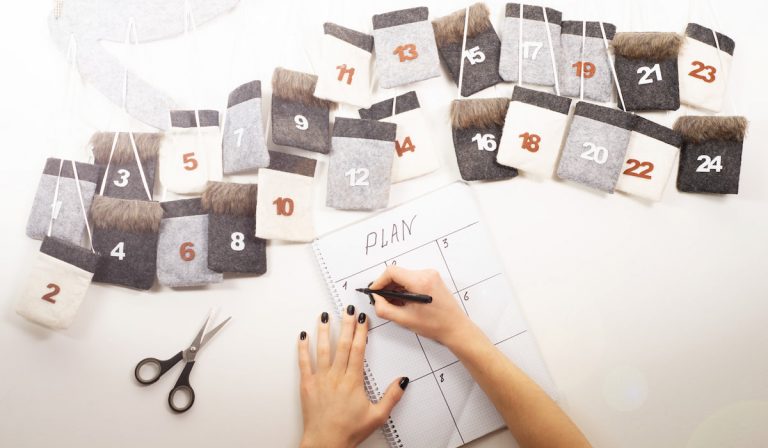18 Key Bullet Journal Ideas Explained – With Pictures
Bullet journaling is one of the most popular methods for people to plan and express themselves creatively. With bullet journaling, people have more freedom to list tasks, plan calendars, and brainstorm solutions to unique challenges.
A bullet journal is a bit of a diary, calendar, and planner, all mixed into one.
Many people are used to structured work. Sometimes it’s hard for them to look at the blank pages of a bullet journal and know what to do. They’re used to filling in calendar appointments in one book and recording their thoughts in a separate diary.
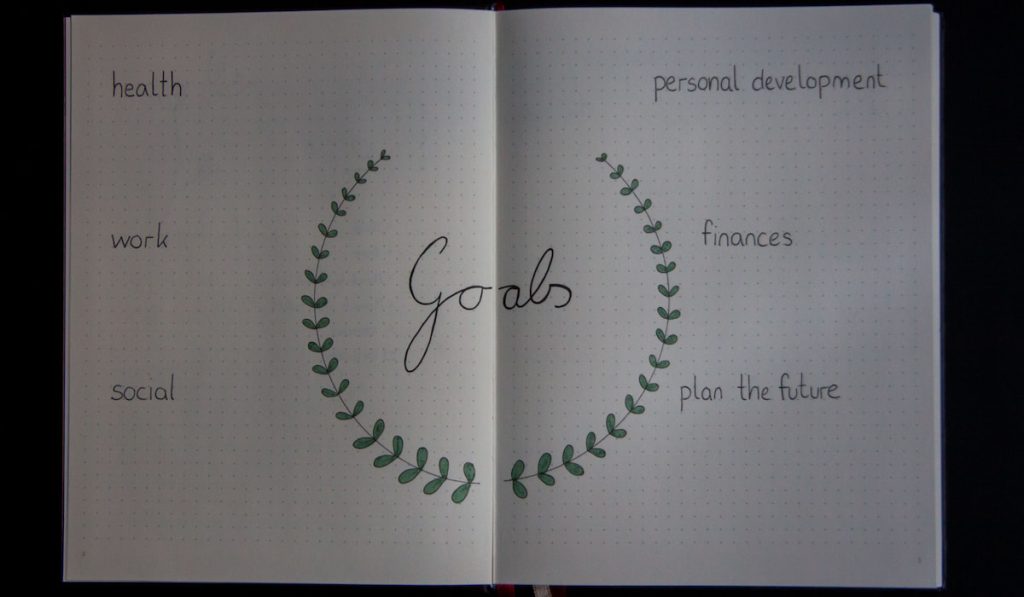
Bullet journaling opens up a world of possibilities for thinking about and planning your days. These journals help you set goals and chart a path for your life in a way some of the other more rigid options can’t.
Still, buying your first bullet journal daunting when you open the first page and don’t know where to start.
We’ve put together this list of eighteen bullet journal ideas to get you started. The more you journal, you’ll begin to experience the value of bullet journaling and why so many successful people swear by this method.
1. Start Your Journal With Longer-Term Goal Setting
One of the best parts of writing down goals is that the process embeds them into your subconscious.
People who write down their goals on paper swear by the practice. Even if you don’t remember everything you write, you’ll find that you met many, if not all, of your goals when you go back to look.
Whether in front or back of your journal, you should dedicate space to larger goals.
For most folks, this means setting yearly goals in multiple areas of life:
- Work
- Education
- Social
- Family
- Finances
- Fitness
- and more!
Make the goals measurable with a concrete milestone and a set time to achieve it.
Then, the rest of your bullet journaling becomes easier because you can regularly review whether what you’re doing is getting you closer to your goals or not.
2. Use Two Pages to Plan Your Month
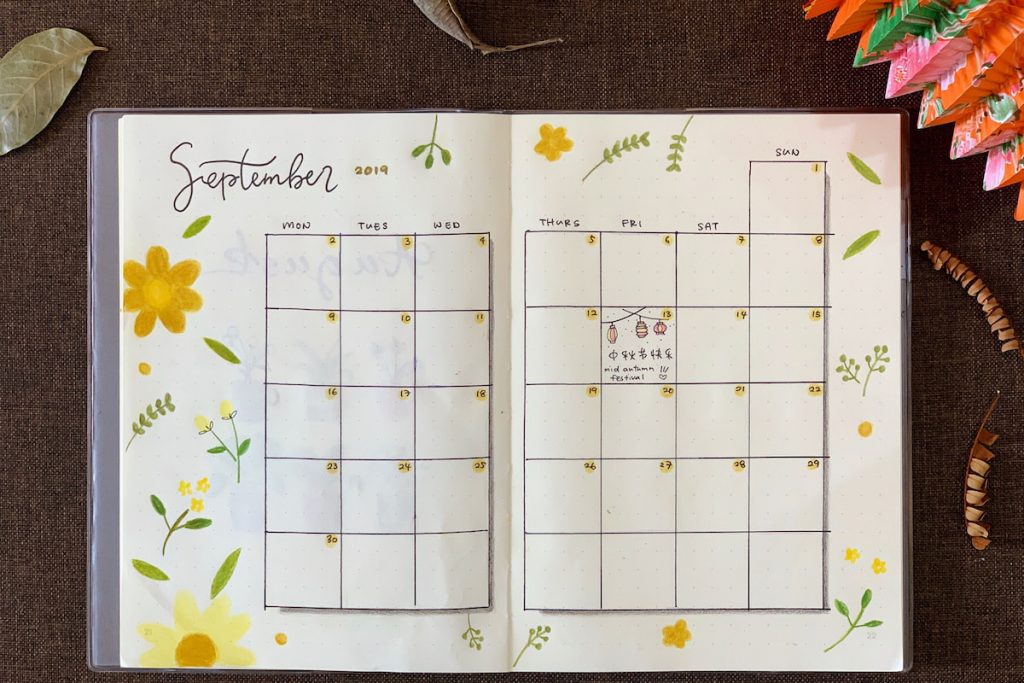
When you reach the beginning of a new month, dedicate two full pages to your calendar and your plans for the month.
More space allows you to explore the directions you want to go, whether professionally or pursuing your hobby.
It’s easy to find bullet journals with monthly calendars followed by pages for journaling, task-setting, brainstorming sessions, etc.
3. Exercise Gratitude

Experts say that fear and hate cannot exist where there is gratitude.
Using your bullet journal to jot down things you are thankful for is an excellent daily practice and a great way to start your day.
In the top corner of your page for the day, list some of the things you’re grateful for. Then, use another space to note which areas you must strive for.
Recording what you’re thankful for will help give you balance and make the times you encounter stress seem less significant.
4. Bullet Journals Are Great for Meal Planning
Are you trying to track your calories or eat healthier food?
Tons of people use bullet journals to plan their meals.
For example, parents make grocery lists and plan what they want to cook for the week, and athletes use journals to track things in more detail to stay on top of how much protein they’re getting and when they should eat.
5. Track Daily Tasks
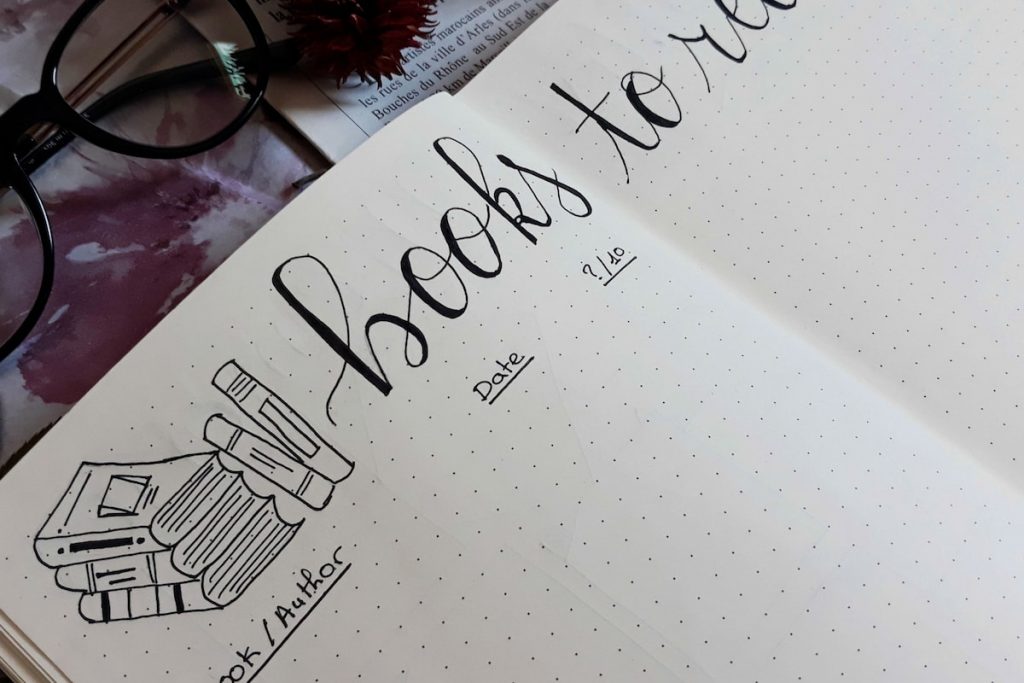
Just like there’s magic in writing down large goals, there’s just something about writing out your daily tasks and crossing them off with a pen or ticking them as being done in your journal.
Bullet journals are fantastic for listing daily tasks.
Sure, you can get a planner for that. Still, bullet journals also provide space for free thinking where you can expound on a certain task or record what was particularly meaningful about a certain meeting or accomplishment.
6. Prep for Big Events

Use your bullet journal to help get the kids ready for the school year by listing everything you need to buy and prepare before the first day of the new semester.
Plan for a new baby’s birth and strategize what you need in your hospital bag before the delivery.
Take time to plan what you want to do in the yard or the garage in the spring before planting begins and it gets too hot outside.
Bullet journals are terrific for the brain dumps about what you need and want before big moments in life.
Stay organized and prevent things from falling through the cracks.
7. Build a Process
Do you do something at your job or at home that happens daily or weekly? Do you have a process in place that helps you track progress and ensures things finish on time?
People use bullet journals to track mailing campaigns, follow-up emails, and business marketing efforts.
When something requires several steps, and you’re repeating the same thing over and over again, split a page or two in your bullet journal into columns and list each step in the process.
It will help you stay on top of what you need to get done rather than trying to remember how far along you are with something.
8. Stay Creative with Colors
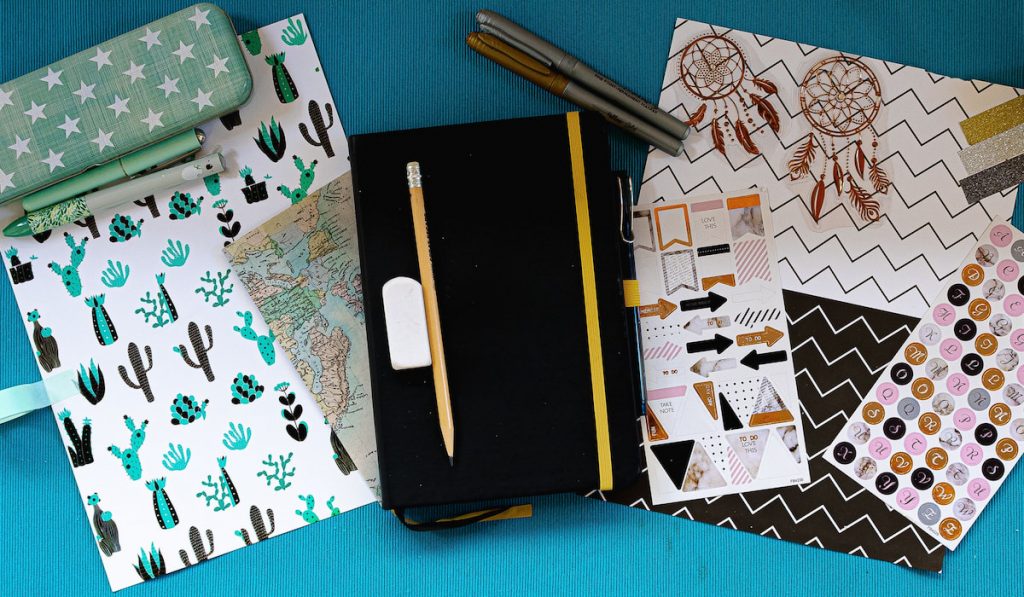
Adding color will keep your journal bright and cheery. Colors do a lot to make the process more enjoyable, but they’ll also help you think and work more effectively.
Using color-coded systems will help you track certain items in a sea of text and notes.
You can use blue for things that are completed and red for high-priority tasks.
Colors can also help you separate priorities and add weight to certain events, goals, and thoughts.
9. Track Your Mood

It’s normal for emotions to go up and down throughout the month. What people don’t realize, however, is that emotions are usually triggered by things around us and what happens to us.
For instance, if you’re around someone you love, you will typically feel joyful and positive for some time.
Conversely, spending time around negative people, stressful work situations, or toxic social settings can trigger depression, anger, and other negative emotions.
Using your bullet journal as a calendar-mood tracker helps you see how your actions influence your emotions. It can help you avoid falling into emotional traps and build resilience.
10. Use Dedicated Doodle Pages

If you spend a lot of time in meetings or trying to figure out solutions to complex problems, then you should dedicate space in your journal for doodles.
Of course, there should always be room to brighten up calendar pages with drawings and colors, but doodling can get in the way of the stuff you need to decipher in the future.
Doodling is important because it distracts the mind from stress.
It takes your attention off of things you’re stressed about and can make way for moments of clarity.
You never know; you could uncover some amazing solution to a problem you’ve been struggling with due to regular doodling.
11. A Sleep Journal
Using your bullet journal as a sleep journal is similar to keeping a mood tracker.
We know now more than ever that sleep is vital to overall health and performance.
Whether you’re a student taking a test or someone preparing a critical presentation at work, it rarely pays to sacrifice sleep.
Try tracking your sleep and see how certain amounts of sleep or that new pillow you recently purchased affects how you feel in the morning and throughout the day. Eventually, you can find your sweet sleep spot and significantly improve your quality of life.
12. List Your Rewards for Completing Goals

What’s the point of striving for challenging goals if we don’t celebrate big wins when they happen?
A bullet journal is a fantastic way to keep yourself accountable for celebrating your successes.
For example, perhaps you bested your mile time or were promoted at work.
Ideally, you will have written down what you’ll do to celebrate once you achieve a certain milestone. This will help you avoid shrugging off any celebration after the initial high of meeting your goal passes.
13. Give Ratings to Find the Best Stuff
Make your journal your partner as you try to find the things that you like the most.
If, for example, you want to explore new coffee drinks, you can change up your daily order and rate how you like it from one to ten.
It’s hard to remember a good coffee drink that you had over a week ago. Rating things in your journal can help you recall how much you liked something.
This technique also works for restaurants, certain clothing brands, the music you listen to, or anything else you want to rate.
14. Map Your Career

Seeing your end goal when you’re new at a company or just starting out in a new role can be challenging.
Likewise, tracking where you want to be in five or ten years can be tough when you’re dealing with the stress of a sales job or answering emails all day.
Too often, career progress happens by accident when it should be the result of purposeful planning. Mapping exercises in bullet journals break things down into small pieces that feel more doable.
Write down where you want to be and work your way back to where you are now. Once you have everything mapped, get started taking steps to get you to your goal.
15. Create the Perfect Daily Routine
The ways people function varies from person to person – some people are night owls, and others are most productive during morning hours.
Finding out what works best for you is one of the most important things you can do in life.
Building a daily routine takes time. It will require a lot of experimentation, so a bullet journal will come in handy as you move things around.
For example, one day, you can exercise in the morning, and the next day you can run at night. Examine how you feel before, during, and after to find the best possible time for everything you want to accomplish in a day.
16. Hold Weekly and Monthly Reviews
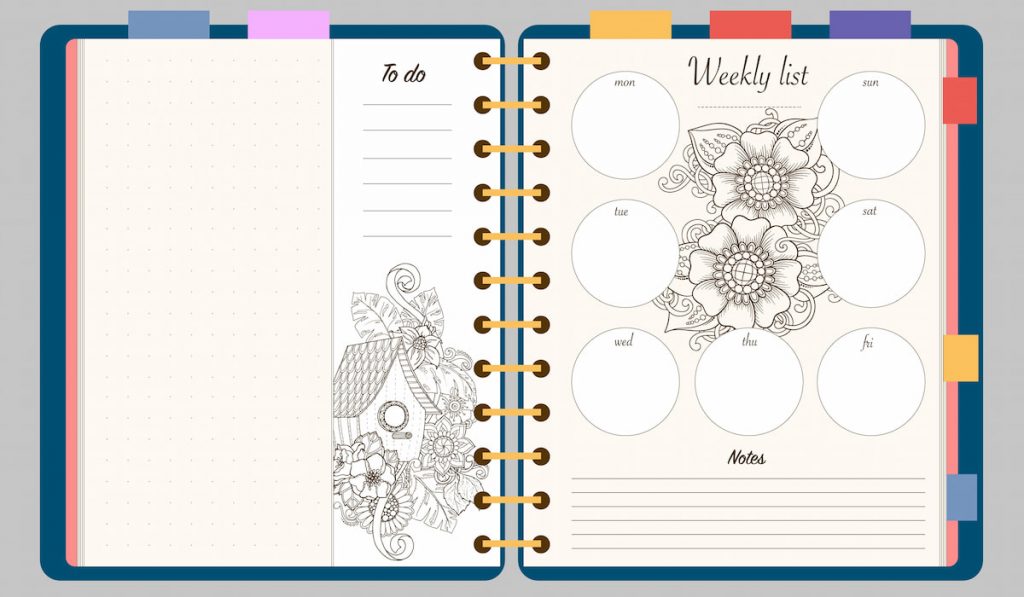
The best planning in the world isn’t very effective unless you conduct regular reviews to examine progress and where you fell short.
Just as you use multiple pages in your bullet journal to plan your month, you should use space each month to review how things went.
In the military, they refer to this process as an after-action report, or AAR. It’s a time when they can deliver feedback on what went well and where they would like to improve next time.
You can adopt something similar to help you avoid making the same mistakes and better ensure you’re building the right habits.
17. Use Stickers and Other Tools to Make Things Fun
Think of your bullet journal as life’s tapestry. While dealing with serious matters in the journal, you shouldn’t be all business all the time.
Use stickers, highlighters, and illustrations to add flavor to your journal and make whatever you’re doing a fun exercise.
Of course, you’ll be naturally drawn to the more colorful pages and sections, so you should be judicious about where you put things.
18. Define Yourself

How much time do you spend thinking about who you are as a person? Are you the type of adult, student, parent, friend, and colleague you want to be?
One of the best exercises you can do with a bullet journal is to explore what it means to be you!
Unfortunately, everyone spends too much time worrying about flaws and not enough time showing appreciation for our good attributes.
Your bullet journal helps you balance things out by giving equal room to both. Explore who you are and celebrate the beautiful parts of your personality and what drives you. Make any changes you want to make positive by avoiding negative thoughts.
Defining yourself and who you want to be is an excellent way to set down guardrails that will keep you safe and on the right path as you move through life.

